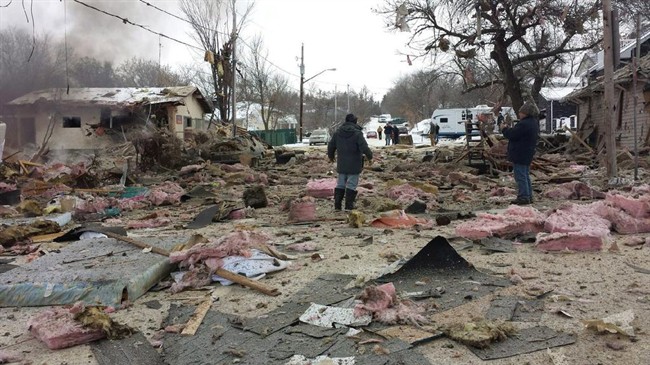Every Friday at 7:05 a.m., the Global Regina Morning News is joined by a guest for ‘Digging Deeper’ to unpack an issue that’s making headlines.

REGINA – This week marks one year since a natural gas leak led to a home explosion in Regina Beach, which destroyed one house and damaged several others.
It also changed how SaskEnergy delivers service to the community, since the root cause of the leak was severe ground shifting.
Now, the effort to make sure it never happens again will include satellite technology.
SaskEnergy’s Dave Burdeniuk joined the Morning News to discuss RADARSAT-2 and how it’s helping the gas company.
Q: What are you trying to monitor with this satellite?
Burdeniuk: What we’re doing is monitoring ground movement in as many ways as we can. We measure ground movement right now underground, we’ve got geo-technical work that tells us what that slope is doing really deep underground.
“You don’t often think about the gas company being able to monitor something from 800 kilometres up.”
The satellite service gives us another tool that helps reinforce our own measurement. You don’t often think about the gas company being able to monitor something from 800 kilometres up, but it does give us a tool that can measure movement within 3-4 millimetres. It can just help us detect movement before even the homeowner could tell us something was going on there.
We work with the company to identify 8,060 different points within the community, so that’s the edge of a roof, the edge of a deck, the sidewalk or a lamp post. Every 24 days that satellite sweeps over Last Mountain Lake and it’s only over for a couple seconds to get us all the measurement points.

We don’t get video or pictures, so we’re not spying on people, but we get this data dump with all the numbers. We overlay that with our own information and it tells us whether we’ve got another issue that needs further investigation.
Q: With such a small movement being detected (3-4 millimetres), how does it help SaskEnergy to know about such a small movement in the ground?
Burdeniuk: It’s an early indication of a bigger problem. Our system has been upgraded, we’ve got additional flexibility … we can take several inches of movement.
Just a couple of millimetres may just be normal freeze and thaw cycle, it may just mean something we need to watch, or it may be an indication it’s one of the zones within Regina Beach where movement is continuing and we may have to go in and remove service.
We’ve had to remove service from 24 homes, we’re safely serving about 500 other customers, but this is just another tool.
Because we have zones in Regina Beach where the movement isn’t stopping – it’s slowed down, but there is still slight movement – we need to stay on top of that.
Q: What’s the cost and what’s the payoff?
Burdeniuk: Overall, we spent $4 million at Regina Beach. That’s all of our capital, all our monitoring programs. For us, the payoff is that we need to keep people safe.
In exceptional circumstances like this, where, because of excessive moisture, you’re seeing movement still continue, we have to use as many tools as we can. This is just another one.

Comments